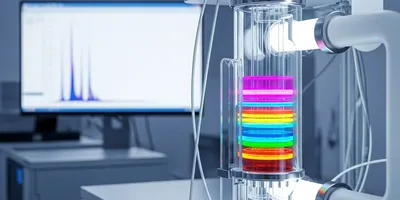In the world of analytical chemistry, few techniques are as fundamentally important yet as consistently evolving as ion chromatography (IC). While many laboratory professionals may associate it primarily with the routine analysis of anions and cations in drinking water or wastewater, this powerful method has transcended its conventional applications to become an indispensable tool across a vast array of industries. From ensuring the purity of a life-saving pharmaceutical to verifying the authenticity of a food product or monitoring air quality, ion chromatography provides precise, rapid, and reliable data for a wide range of ionic and polar species.
So, what exactly is ion chromatography? At its core, it is a liquid chromatographic technique designed specifically for the separation and detection of ions and polar molecules. It functions on the principle of ion exchange, where target analytes in a liquid sample are separated based on their charge and affinity for a specialized stationary phase—the ion-exchange column. Unlike other forms of liquid chromatography, IC utilizes an ionic mobile phase (eluent) and often incorporates a suppression system to enhance sensitivity, making it uniquely suited for its task. This article will delve into the core principles of IC, explore its modern applications, and provide practical insights for optimizing your lab’s workflow.
The Fundamental Principles and Instrumentation of Ion Chromatography
Understanding the core components of an IC system is the first step to mastering the technique. At its most basic, the system consists of a few critical modules that work in concert to achieve separation and detection.
1. The Pump and Eluent: The pump delivers a constant, pulsation-free flow of the mobile phase, or eluent, through the system. The eluent is a solution, typically a weak acid or base, that contains ions that compete with the sample ions for binding sites on the stationary phase. The composition and concentration of the eluent are key to controlling the separation.
2. The Injector: This component introduces a precise, reproducible volume of the sample into the eluent stream. Modern systems often use automated injectors (autosamplers) to improve efficiency and reduce human error.
3. The Guard Column and Separator Column:
- Guard Column: This is a small column placed before the main separator column. Its purpose is to protect the more expensive separator column from contamination by irreversibly binding particulate matter and other strongly retained compounds in the sample.
- Separator Column: This is the heart of the system. It is packed with a stationary phase—a resin with charged functional groups—that acts as the ion exchanger. As the sample passes through, analytes with the same charge as the stationary phase are retained for longer or shorter periods depending on their charge and size, leading to separation.
4. The Suppressor: This component is one of the most distinguishing features of modern ion chromatography. It's placed between the separator column and the detector. Its primary function is to chemically modify the eluent to reduce its background conductivity, while simultaneously converting the analytes into a highly conductive form. This action dramatically increases the signal-to-noise ratio, allowing for the sensitive detection of even trace amounts of ions.
5. The Detector: The most common detector for IC is a conductivity detector. This device measures the electrical conductivity of the eluent stream as the separated ions elute. Since the suppressor has minimized the eluent's background conductivity, any change in conductivity is directly proportional to the concentration of the analyte.
Advanced Applications of Ion Chromatography Across Industries
The true power of ion chromatography lies in its adaptability. While environmental analysis remains a cornerstone, its utility has expanded exponentially.

Ion Chromatography can be used in a variety of ways.
GEMINI (2025)
- Pharmaceutical and Biopharmaceutical Analysis: Ensuring the quality and safety of medicines is paramount. IC is used to determine the content of active pharmaceutical ingredients (APIs), analyze excipients, and detect trace impurities and contaminants, such as halides and metal ions. It is also used in drug stability studies to monitor the degradation of ionic species over time.
- Food and Beverage Safety and Quality: The food industry relies on IC for a multitude of tasks. It is used to quantify organic acids (like malic, citric, and lactic acid) to assess food ripeness and spoilage. It also plays a vital role in detecting inorganic contaminants, preservatives (e.g., nitrite and sulfite), and essential nutrients (like vitamins and minerals).
- Air Quality and Industrial Hygiene: In this field, IC is used to analyze airborne particulates and gases. Samples collected on filters or in impinger solutions can be analyzed for sulfate, nitrate, chloride, and other ionic components. This data is critical for understanding atmospheric pollution and ensuring worker safety in industrial environments.
- Power Generation and Semiconductor Manufacturing: In these high-purity applications, even trace amounts of ionic contaminants can be catastrophic. IC is used to monitor the purity of boiler water, cooling water, and ultra-pure water used in semiconductor fabrication. It can detect parts-per-billion levels of corrosive species, preventing costly equipment damage and production failures.
Overcoming Common Challenges and Optimizing Your Workflow
For laboratory professionals, a successful ion chromatography method isn't just about the equipment; it’s about meticulous method development and troubleshooting.
- Sample Preparation: This is often the most critical step. Matrix effects—where other components in the sample interfere with the analysis—are a common problem. Proper sample dilution, filtration, solid-phase extraction (SPE), or dialysis can remove interfering substances, ensuring accurate results.
- Method Development: Choosing the right column, eluent composition, and flow rate is essential for achieving optimal separation. Isocratic methods (constant eluent concentration) are common for simple separations, while gradient elution (changing eluent concentration over time) is used for complex mixtures with a wide range of analyte affinities.
- Troubleshooting: Common issues include high back pressure, poor peak shape, and baseline noise. High back pressure can indicate a clogged guard column, while poor peak shape may be a sign of column degradation or improper eluent pH. Baseline noise can be caused by a dirty suppressor or gas bubbles in the system. A systematic approach to troubleshooting can save significant time and resources.
The Indispensable Role of Ion Chromatography in Modern Labs
In conclusion, ion chromatography is far more than a tool for analyzing water samples. Its core principles of ion exchange, combined with the power of modern suppression technology, make it an exceptionally versatile and sensitive technique. From ensuring pharmaceutical product quality to guaranteeing the safety of our food and monitoring the air we breathe, IC has solidified its position as an indispensable workhorse in analytical laboratories worldwide. As technology continues to advance, miniaturization and automation will only further expand its reach, making it more efficient and accessible for a new generation of scientific challenges. Mastering this technique is not just about running a sample; it's about unlocking a wealth of critical data to drive innovation and ensure safety.
Frequently Asked Questions about Ion Chromatography
What is the primary difference between ion chromatography and HPLC?
Both are liquid chromatography techniques, but they differ in their stationary and mobile phases, and the types of molecules they analyze. Ion chromatography specifically separates ions and polar molecules using an ion-exchange column and an ionic mobile phase, whereas High-Performance Liquid Chromatography (HPLC) typically separates non-ionic species based on their polarity using a reversed-phase column and an organic solvent mobile phase.
Can ion chromatography analyze organic molecules?
Yes, it can. While it is best known for inorganic ions, it is also highly effective for separating and quantifying a wide range of organic acids (e.g., citric, acetic, and formic acid), amines, and other polar organic molecules that are capable of existing in an ionized state.
How do I choose the right column for my IC method?
The choice of column depends on the analytes you are separating. For anions, you will use an anion-exchange column, and for cations, a cation-exchange column. Within these categories, you must also consider the column's selectivity and capacity, which depend on the type of resin and the number of exchange sites. Consult the column manufacturer's recommendations for specific applications.
What is the purpose of a suppressor in ion chromatography?
A suppressor is a critical component used in suppressed IC to increase the sensitivity of the method. It reduces the background conductivity of the eluent before it reaches the detector, while simultaneously converting the separated analytes into a highly conductive form. This allows for the detection of analytes at very low concentrations.












